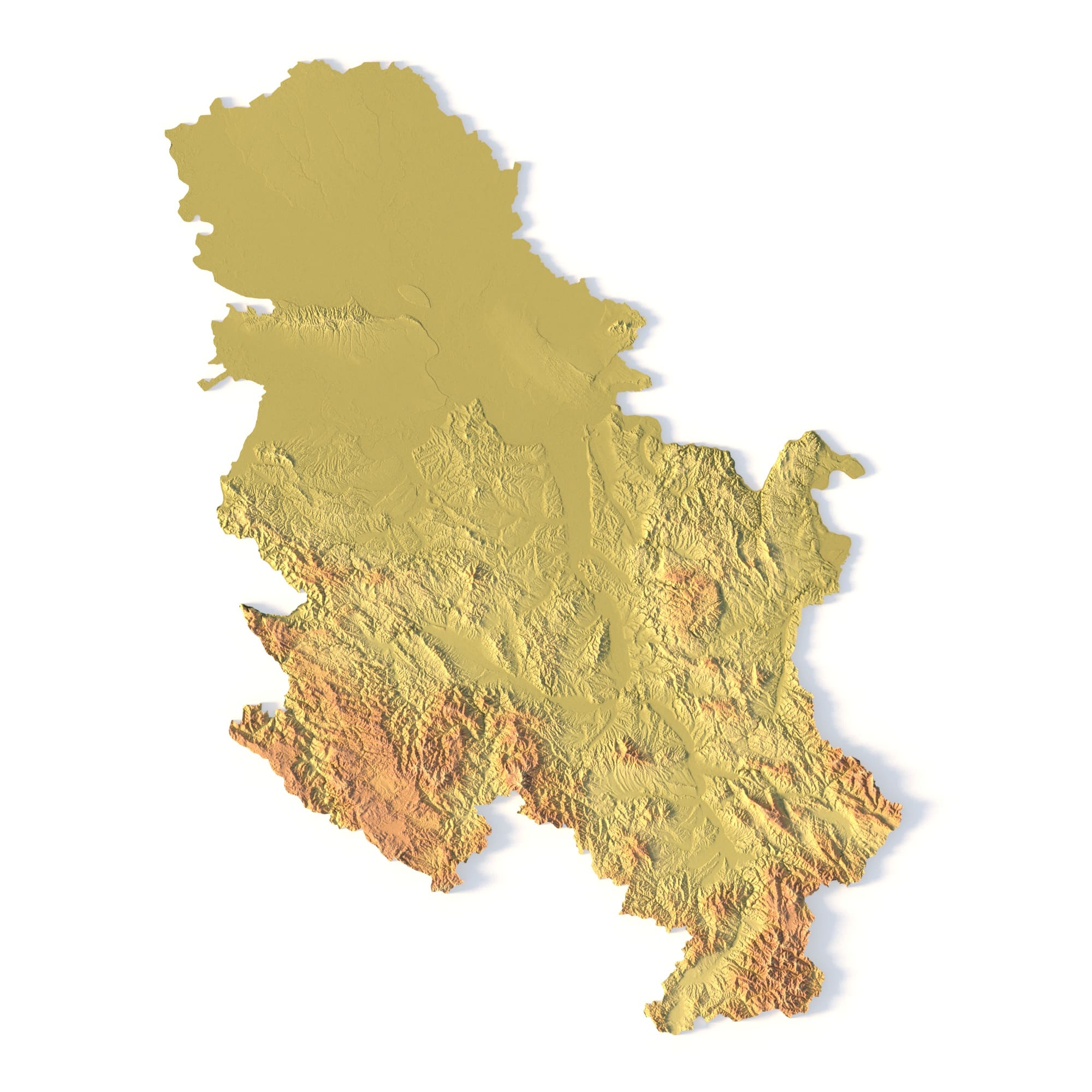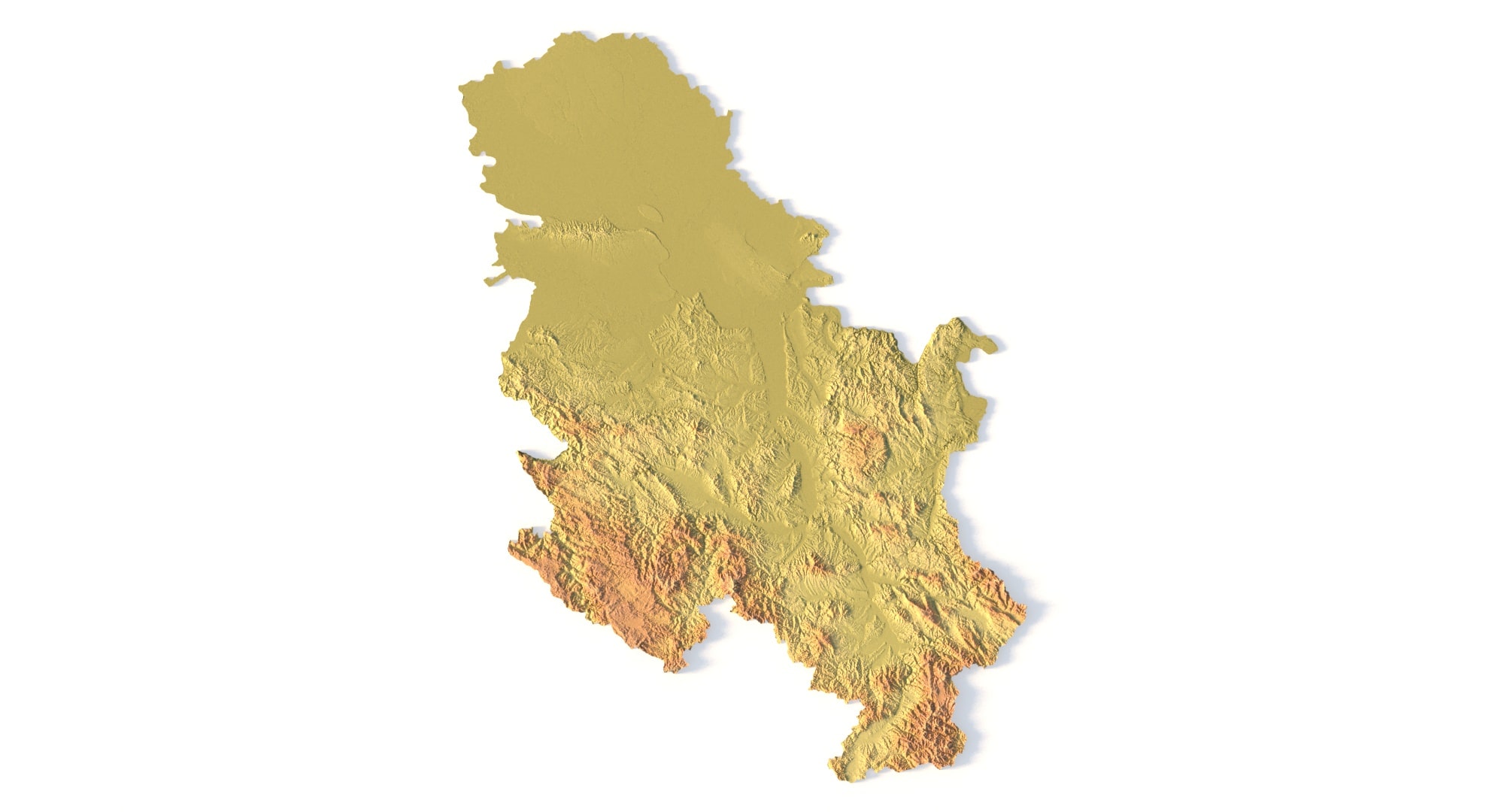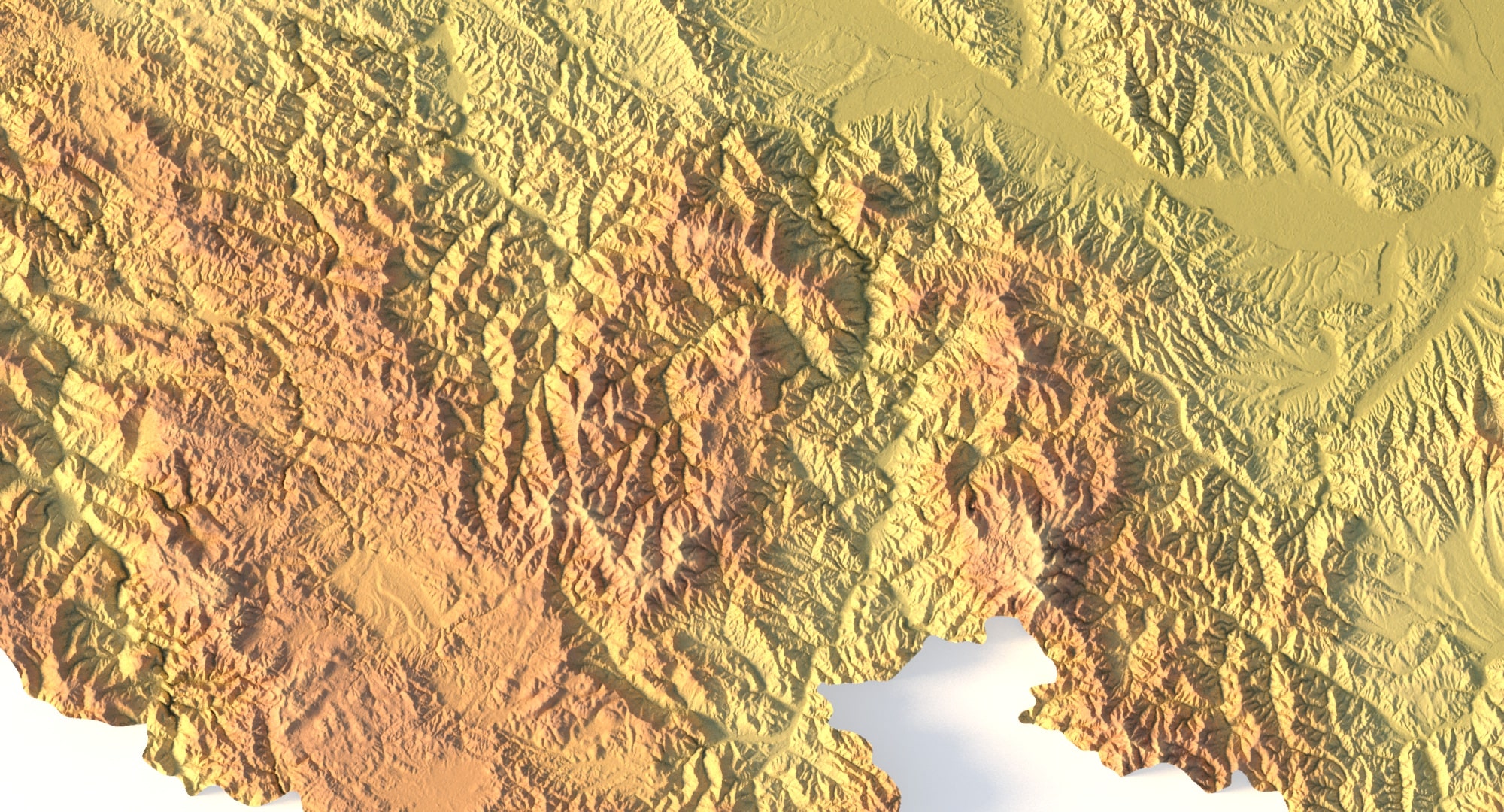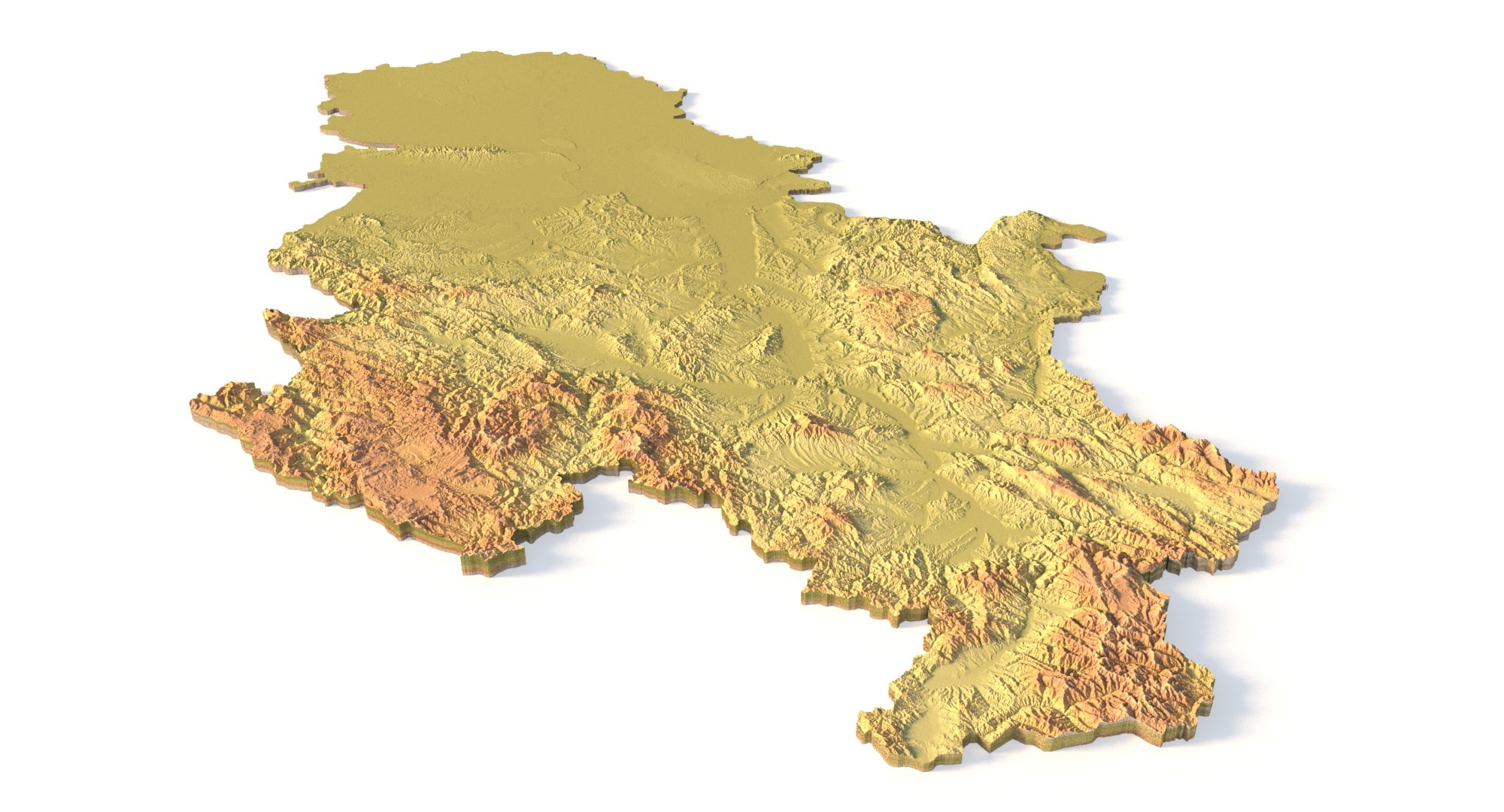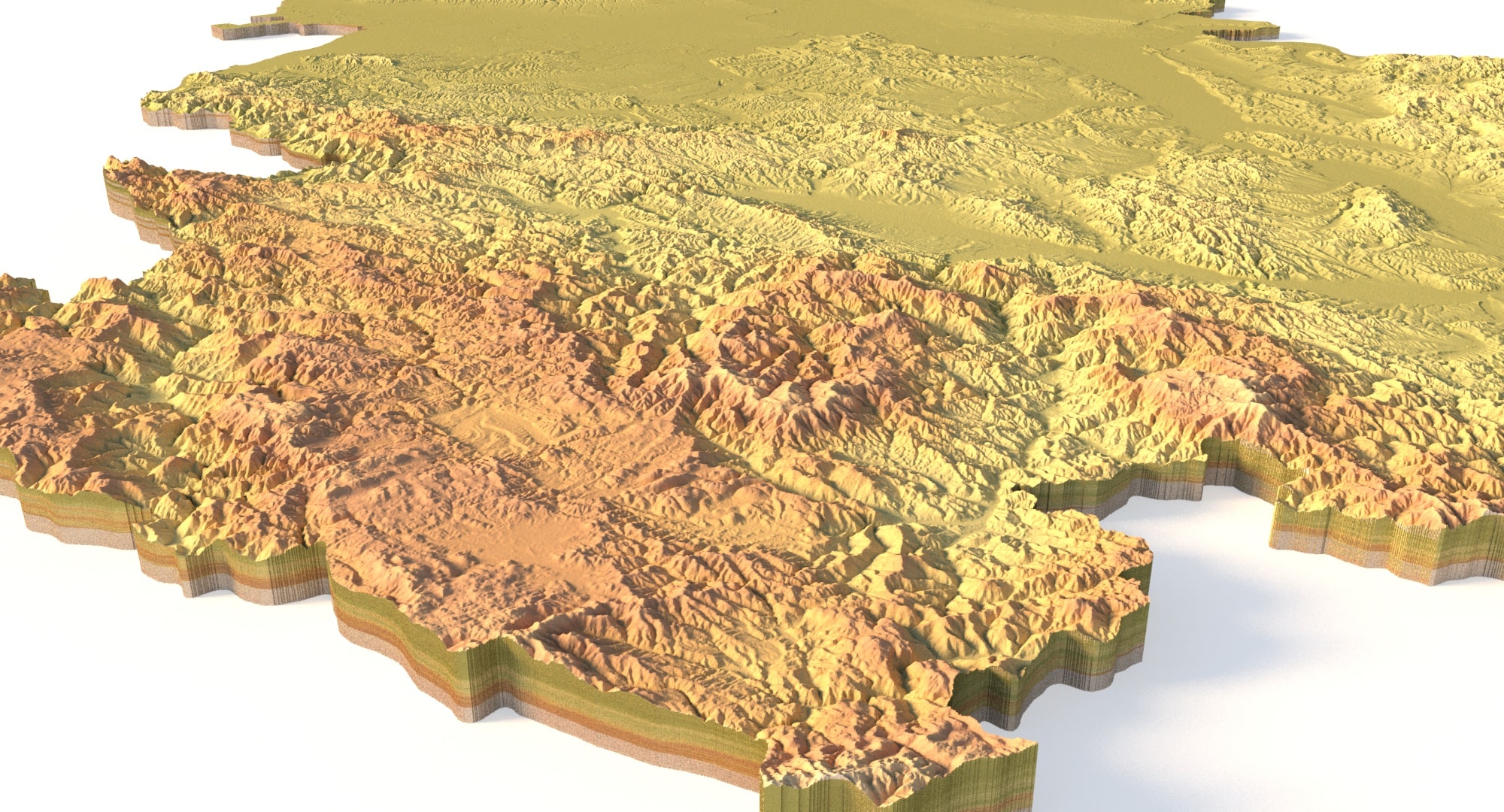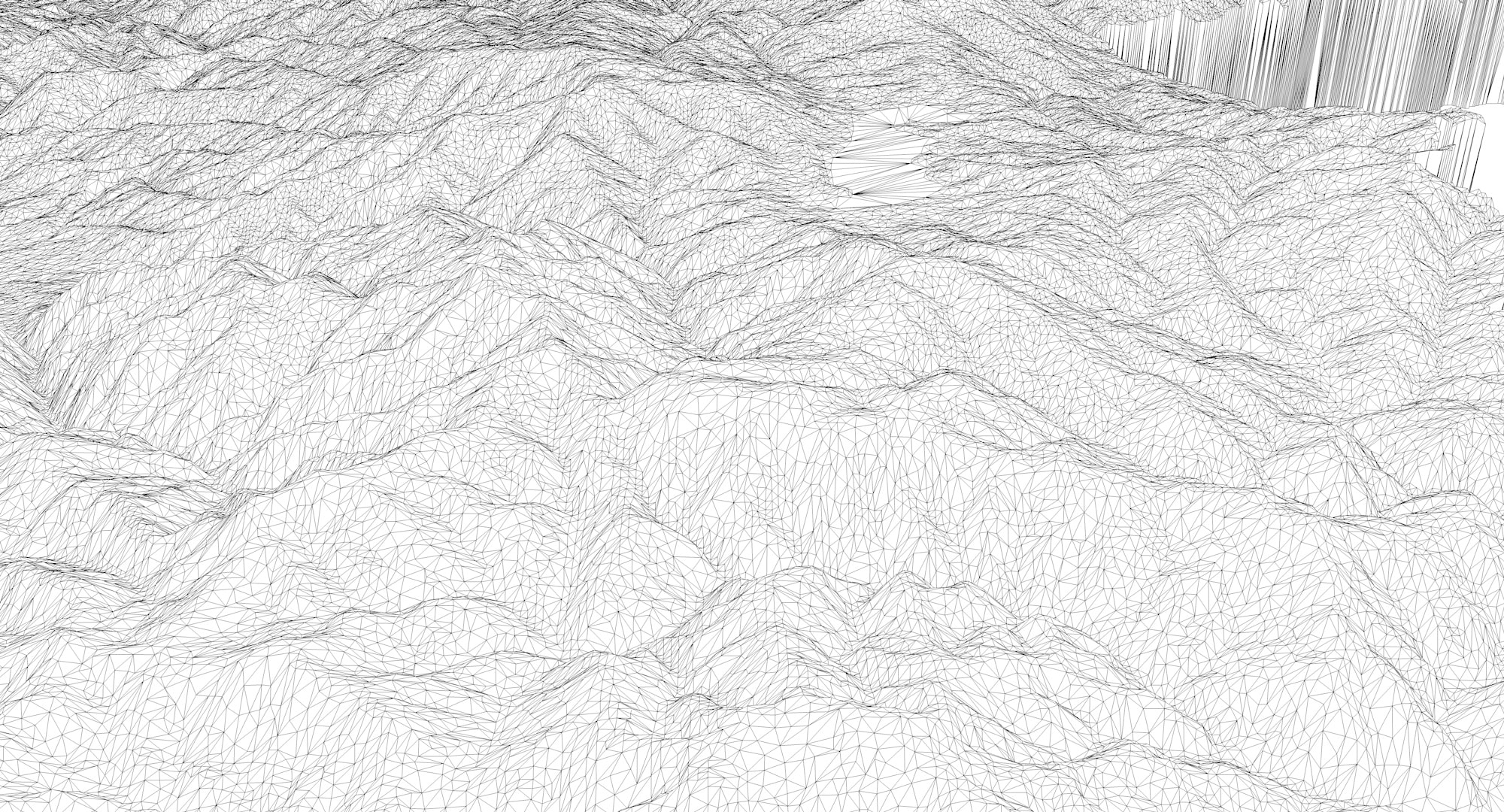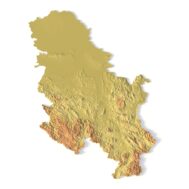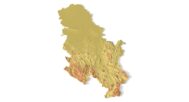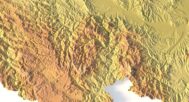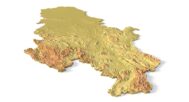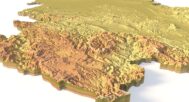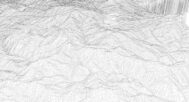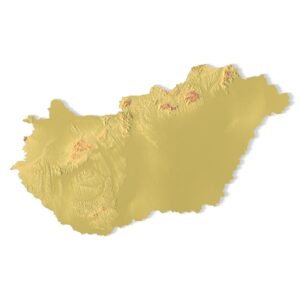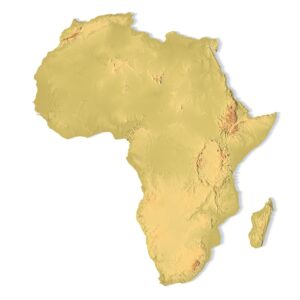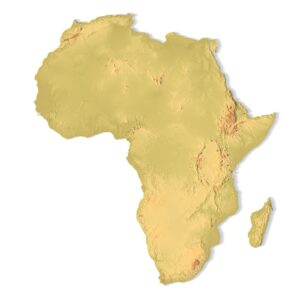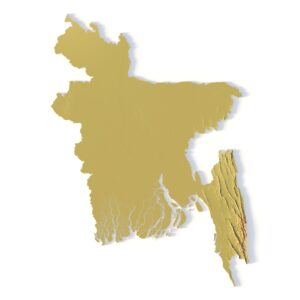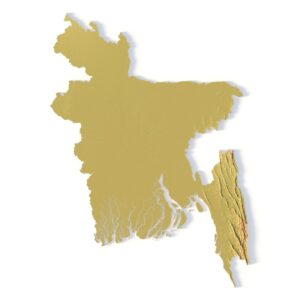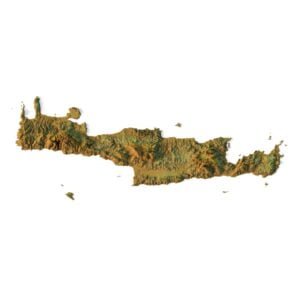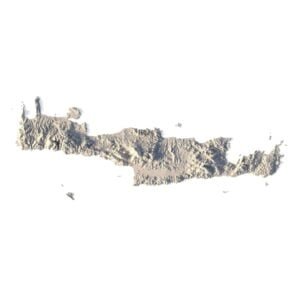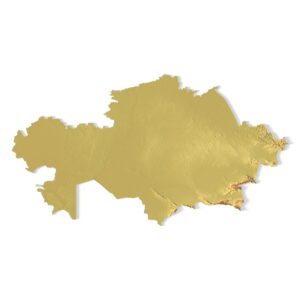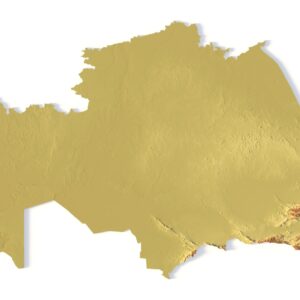The Serbia Topographic Map is a high-resolution 3D terrain model based on an accurate digital elevation model (DEM). It faithfully represents Serbia’s diverse landscapes, including the Dinaric Alps, river valleys, and rolling plains, making it an excellent choice for designers, educators, cartographers, and geography enthusiasts.
Serbia Topographic Map – 3D Model for 3D Printing & CNC Carving
$15.00
High-polygon 3D model of Serbia in STL format
![]()
- File size: 418 MB
- Polygons: 8 779 332
- Vertices: 4 389 621
- Geometry: Polygonal Tris only
- Model size: 464 mm x 613 mm x 9.2 mm
- Projection: Mercator
- Scaling factor X:Y:Z: 1:1:3
- Base: Closed
We accept VISA, Mastercard, ApplePay, GooglePay and other payment methods
You can also purchase this product using MasterCard/Visa on
RenderHub → and 3Dexport →.
This STL file is fully compatible with FDM and SLA 3D printers, as well as CNC routers. You can 3D print a realistic map of Serbia in plastic or carve it from wood or metal. It’s ideal for educational models, souvenir production, landscape projects, and terrain visualization.
This topographic model can serve as a striking element in a design studio, classroom, or architectural presentation. With precise elevation modeling and high visual fidelity, it inspires creative use and brings real-world landscapes to life. Every terrain feature is carefully modeled to ensure your print looks professional and compelling.
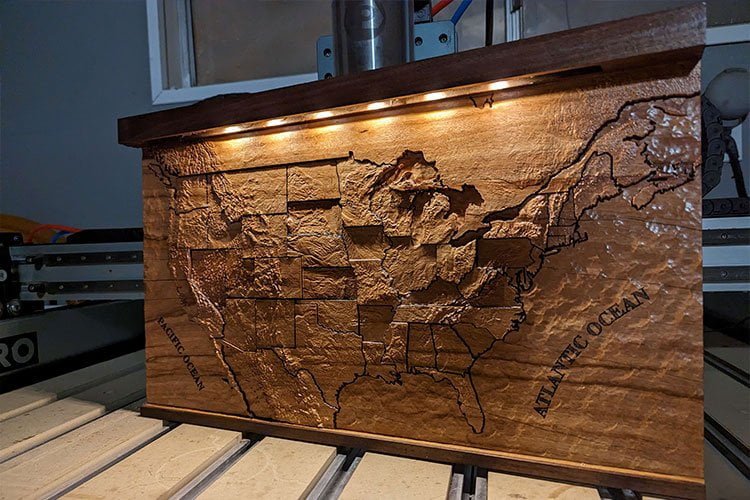
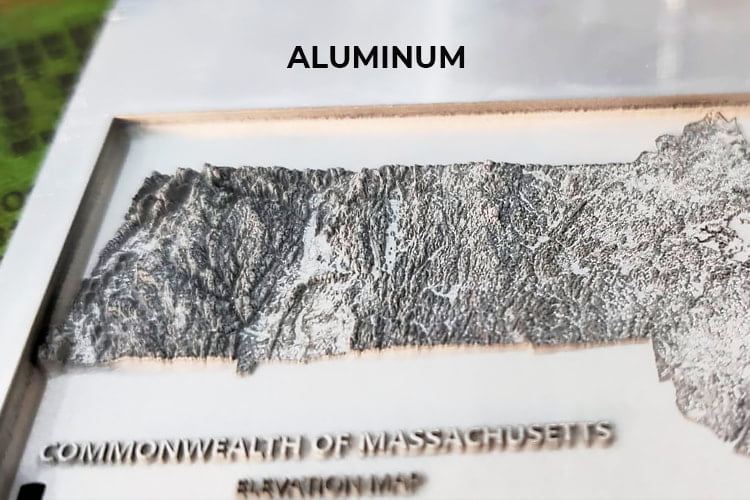
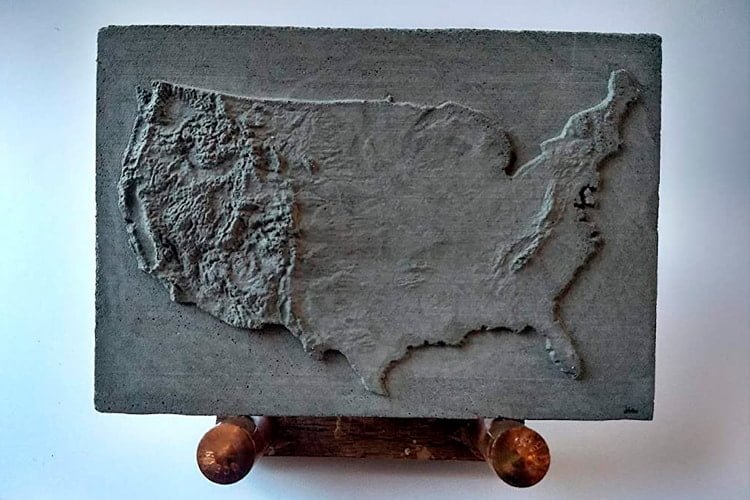
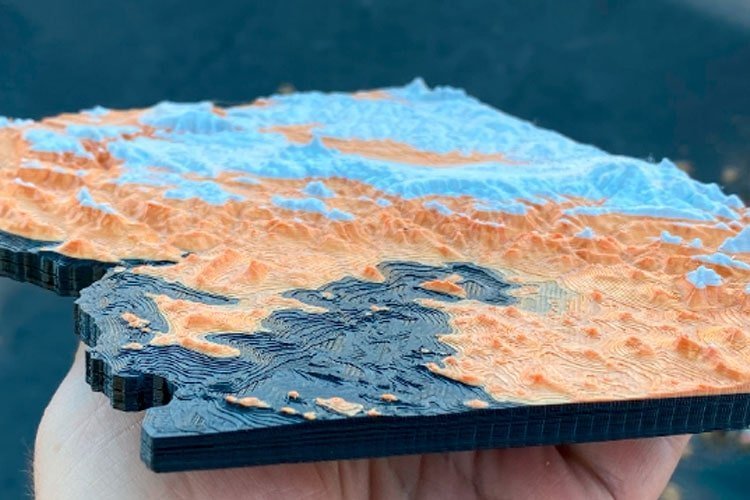
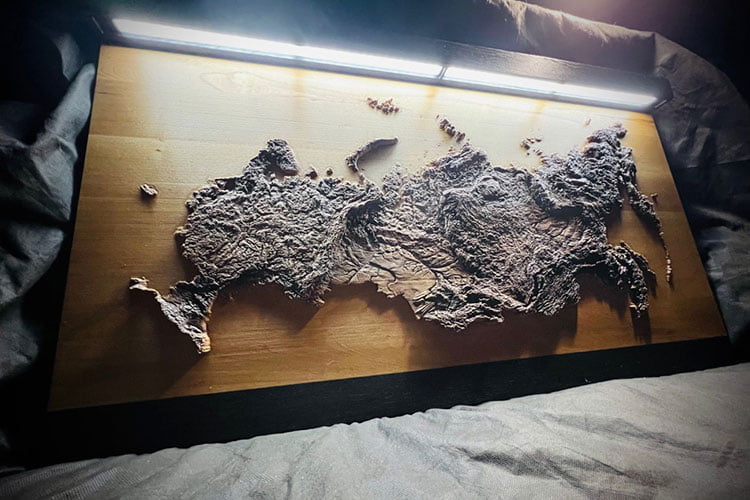
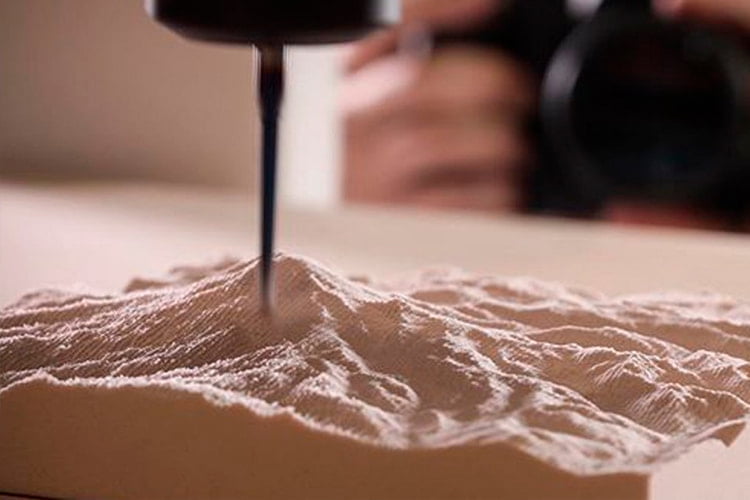

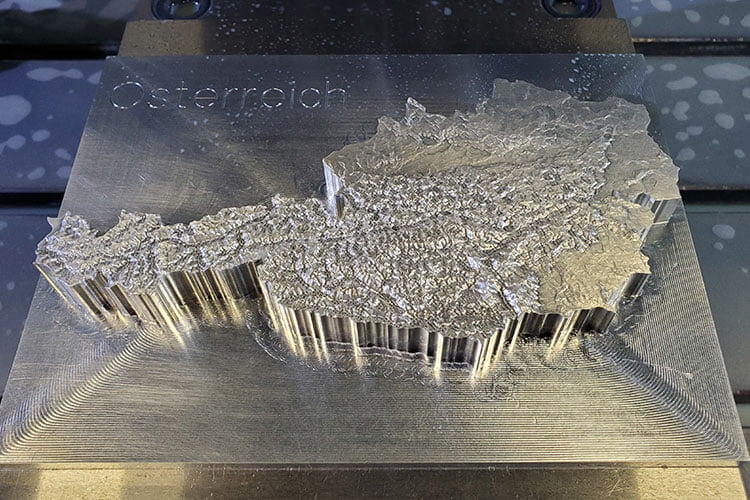

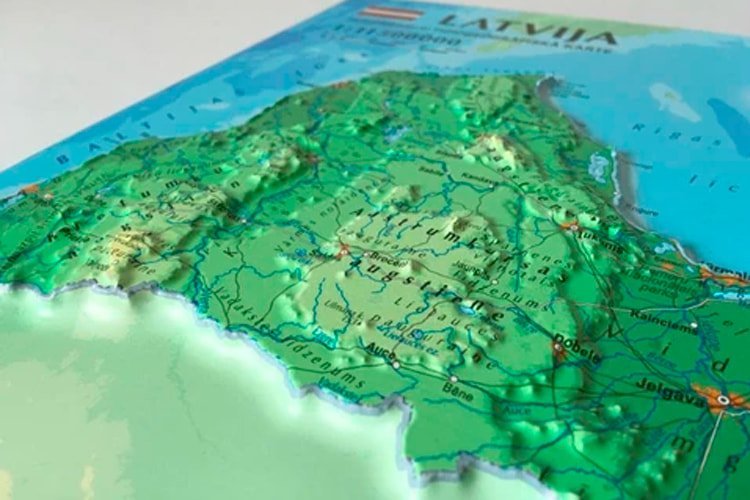
Why choose this model:
✔ Realistic Topography Based on Geospatial Data – Built from a digital elevation model (DEM) for real-world accuracy. Perfect for 3D terrain visualization and mapping projects.
✔ Ready for 3D Printing & CNC Machining – Clean STL file optimized for printing in PLA, resin, wood, aluminum, and more. Usable at different scales.
✔ Designed for Education, Design & Creativity – Use this model in geography classes, architecture layouts, art pieces, and custom souvenir production.
Sample Use Cases:
3D print a raised-relief map of Serbia for geography lessons
CNC carve Serbia’s terrain into wood or metal for educational panels
Create an elevation-aware terrain layout for architectural planning
Produce Serbia-themed wall art or display models
Design unique gifts and geographic jewelry
FAQ
The description includes scaling factors for each axis. For example, if you see X – 0.001, Y – 0.001, Z – 0.003, this means the height is three times greater than the width and length. We scale height this way to emphasize the relief.
If you need uniform proportions, let us know—we’ll prepare a custom model upon request.
Send us your required specifications, and we’ll adapt the model accordingly.
Yes, we check every model for integrity and errors.
Yes. For better surface quality, we recommend printing it vertically.
Larger models require more polygons to preserve relief detail. Provide your desired dimensions, and we’ll prepare:
A single optimized model or
A segmented version with high resolution.
Yes, but polygon reduction may be necessary. Submit a request with your project’s dimensions for a tailored solution.
If you have any other questions or special requests, feel free to get in touch with us. We’re here to help!
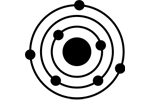 Solar System
Solar System World
World Continents
Continents Peninsulas
Peninsulas Islands
Islands Countries
Countries States of America
States of America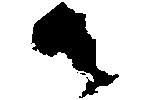 Canadian Provinces
Canadian Provinces Parks & Canyons
Parks & Canyons Fantasy
Fantasy Other
Other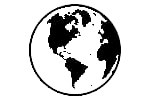 Planets
Planets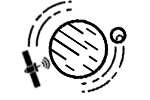 Satellites
Satellites